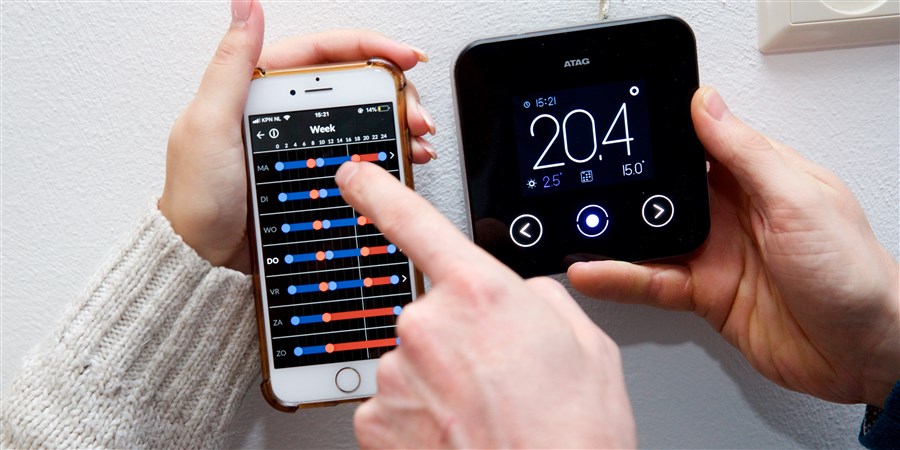An increasing number of people use smart devices

| IOT | 2022 (% of people aged 12 yrs or older) | 2020 (% of people aged 12 yrs or older) |
|---|---|---|
| Smart TV | 60 | 53 |
| Smart water meter, gas meter or electricity meter | 55 | 59 |
| Virtual assistant controlled via an app, smart audio system or smart speaker | 39 | 34 |
| Smart device to control heating | 25 | 27 |
| Smart lighting systems, smart plugs or other smart devices or systems at home | 23 | 14 |
| Smoke detector, security camera or other smart security systems | 22 | 11 |
| Smart household appliances | 15 | 6 |
Refrigerators, speakers, lighting controls, security systems, cars and many other devices can be connected to the internet. These devices and systems then send and receive data online. This is also known as the ‘internet of things’. In 2022, 83 percent of the Dutch population said they had one or more ‘smart’ devices or systems at home. A total of 60 percent had a smart TV and 55 percent had a water meter, gas meter or electricity meter at home that can be read using a remote device or app. Nearly 4 in 10 use a virtual assistant (such as Siri, Google Home, Amazon Alexa, Bixby) that can be controlled via an app, smart speaker or other smart audio system.
Ownership of ‘smart’ household devices more than doubles
In 2022, the use of smart home devices has more than doubled compared to 2020. A total of 6 percent of the Dutch population had a smart household device such as a robot vacuum cleaner, refrigerator, coffee maker or robot lawn mower. In 2022, that share was 15 percent. Compared to 2020, more people also owned smart lighting and security systems.Smart accessories in demand
In 2022, 5 in 10 people in the Netherlands had one or more smart accessories, such as a smart watch, fitness tracker, wireless headphones or other wearables. In 2020, this was less than 2 in 10 Dutch people (17 percent). The number of people (12 percent) using smart health devices, such as a blood pressure monitor, toothbrush or bathroom scales that are connected to the internet also increased compared to 2020 (5 percent). The number of people who owned a car with a built-in internet connection also increased.
| IOT | 2022 (% of people aged 12 yrs or older) | 2020 (% of people aged 12 yrs or older) |
|---|---|---|
| Smart accessories | 51 | 17 |
| Car with built-in internet connection | 17 | 10 |
| Smart health devices | 12 | 5 |
| Gadgets connected to the internet | 3 | 3 |
1 in 5 people experience problems when using smart devices
Smart devices are not error-free. More than 1 in 5 users experienced problems when installing, setting up or connecting their smart devices. A smaller group of people (5 percent) reported security or privacy issues because a device or system had been hacked or because data had been shared without their consent.Not everyone needs smart devices
Although the use of smart devices and systems is increasing, not everybody is convinced that this is necessary. Among those who indicated they do not use smart devices or systems at home, over 80 percent said they do not feel the need. The high cost and concerns about privacy and security were also mentioned by over 25 percent of respondents as reasons for not having any smart device.| Reasons for not having any smart devices at home | 2022 (% of people aged 12 yrs or older) | 2020 (% of people aged 12 yrs or older) |
|---|---|---|
| Do not feel the need | 83 | 77 |
| High costs | 23 | 29 |
| Concerns about privacy and security | 25 | 25 |
| Did not know they existed | 10 | 11 |
| Do not know how to use them | 6 | 7 |
| Potential health risk | 5 | 2 |
| Not compatible with other devices | 3 | 5 |
The ‘2022 survey on ICT usage among households and individuals’ was conducted between April and July 2022 among 6 thousand people aged 12 and over.